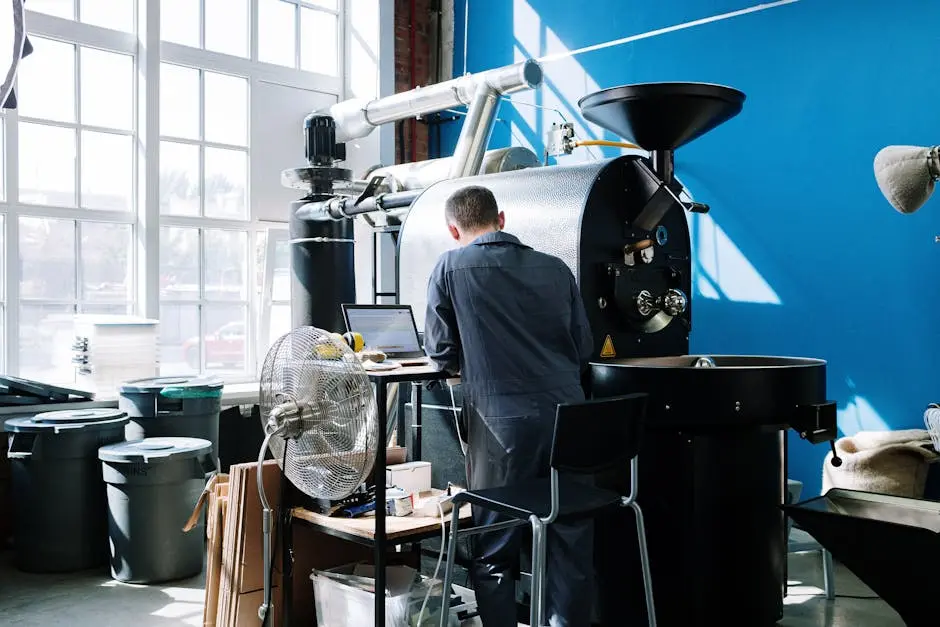
The Art and Science Behind Crafting the Perfect Coffee with Coffee Bean Roasters
Brewing the perfect cup of coffee is both an art and a science. With the rise of coffee bean roasters, many people are discovering the nuances that go into producing a truly exceptional brew. In this blog, we’ll explore the fascinating world of coffee bean roasting, from the selection of beans to the brewing process, and how every step contributes to that perfect cup.
Understanding Coffee Beans: The Basics
Before diving into the roasting process, it’s vital to understand the different types of coffee beans, including Arabica and Robusta. Each variety brings its unique flavor profile and qualities to the brew.
Arabica beans, known for their smooth and complex flavors, typically produce a coffee that is sweeter and more aromatic. On the other hand, Robusta beans are bolder and more bitter, often with a higher caffeine content. This contrast sets the stage for how each type plays a role in your final cup.
Moreover, the growing region significantly influences a bean’s flavor. Beans grown in high-altitude regions generally contain more acidity and bloom with vibrant characteristics. Understanding these nuances is not just informative; it enriches your coffee experience, providing a deeper appreciation for each sip.
The Journey From Bean to Brew
Exploring the entire process, from harvesting to processing, reveals how each step impacts the final flavor. Understanding this journey enhances our appreciation for what we drink.
The journey begins with the careful harvesting of coffee cherries, which requires skill to ensure only the ripest cherries are picked. This step is crucial because even a slight variation in ripeness can alter the flavor profile of the beans.
Once harvested, the cherries undergo a series of processing methods—washed, natural, and honey—that each lend distinctive characteristics to the beans. For instance, natural processing allows the beans to soak up sugars from the fruit, leading to fruity flavors, while washed processing yields a cleaner taste.
That’s why understanding this journey from bean to brew enhances your appreciation for what you drink. Knowing the effort that goes into your morning cup doesn’t just make you a consumer; it transforms you into a coffee enthusiast.
Roasting Techniques: The Artful Transformation
Roasting is where the magic happens. Different roasting techniques and profiles can drastically influence the taste and aroma of coffee. We’ll delve into light, medium, and dark roasts.
Light roasts tend to preserve the beans’ original flavors, allowing notes of fruit and floral to shine. This roasting style highlights the terroir—the environment in which the coffee is grown—becoming evident in each brew.
On the flip side, dark roasts develop a bolder and richer flavor, often exhibiting bittersweet chocolate or smoky undertones. While some coffee enthusiasts gravitate towards the complexity of light roasts, others embrace the comfort found in a robust dark brew.
Getting acquainted with roasting profiles also aids you in selecting the right coffee for your palate. Each coffee bean’s journey through roasting is unique, offering endless variation and surprise, making it an exciting aspect of coffee culture.
Brewing Methods: Making Your Coffee Shine
Once your beans are roasted to perfection, the next challenge is brewing. We’ll cover various methods like French press, pour-over, and espresso, and how they can elevate your coffee experience.
The French press method allows the oils and emulsified solids of the coffee to remain in the cup, yielding a rich and full-bodied experience. Pour-over, on the other hand, offers precision, enabling you to control the flow rate and extraction, resulting in clarity of flavors.
Espresso is an entirely different beast, concentrated and robust, capturing the essence of the coffee in a small but powerful shot. Each brewing method has its own unique rhythm, creating a coffee experience that’s as much about the process as it is about the drink itself.
Experimenting with different brewing methods allows you to appreciate coffee on a deeper level, helping you discover how subtle changes can yield surprising results. Whether it’s the grind size or water temperature, every detail contributes to the final product, making your coffee experience uniquely yours.
Tasting and Appreciating Coffee: Developing Your Palate
The final step is learning how to taste and appreciate coffee. This section will guide you through recognizing different flavors and aromas, allowing you to savor each cup fully.
Developing your palate involves engaging all your senses. Look at the coffee’s color, listen to the sounds of brewing, and inhale the rich aromas wafting in the air. Each sensory detail invites you to be present in the moment, heightening your coffee experience.
Once you take your first sip, focus on the flavor notes that emerge—are they fruity, nutty, or perhaps chocolatey? Understanding how to identify these flavors will deepen your connection with your coffee. Plus, it opens up a world of possibilities to explore new beans and blends.
Finally, sharing your tasting experiences with friends or at coffee tastings can cultivate a greater appreciation for coffee as a whole. It turns a solitary cup into a shared moment, fostering community through a mutual love for this remarkable beverage.
Celebrating the Craft of Coffee
In conclusion, the journey of crafting the perfect coffee is rich with intricacies. By understanding the art and science behind coffee bean roasting, enthusiasts and casual drinkers alike can appreciate the effort and skill involved in each sip. So, the next time you enjoy your coffee, take a moment to celebrate the craft behind it!

